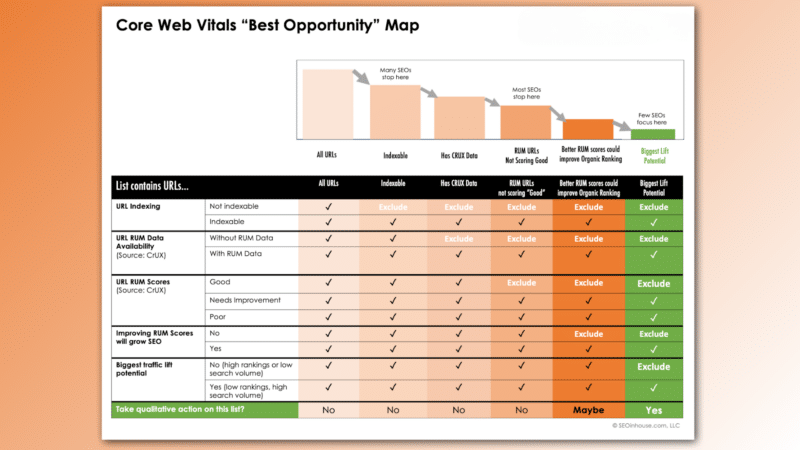
Navigating Core Web Vitals: Strategies for SEO Professionals
In the rapidly evolving landscape of digital marketing, SEO professionals find themselves grappling with the complexities of improving website performance, particularly regarding Core Web Vitals (CWV). The challenge often lies in determining which specific changes can drive meaningful enhancements in user experience and search visibility. Insights drawn from recent discussions at SMX Advanced reveal a strategic approach to prioritizing the right URLs for maximum impact.
A key takeaway from the presentation is the distinction between qualitative and quantitative priorities. For enterprise-level websites, the emphasis should be on implementing changes that affect multiple URLs simultaneously. However, it is crucial to note that these changes do not automatically translate into improved performance. The introduction of a “Core Web Vitals opportunity map” presents a structured method for identifying URLs that stand to benefit most from optimization efforts, thereby offering a clear path forward.
To effectively identify underperforming URLs, professionals should focus on those with poor Real User Monitoring (RUM) metrics, as highlighted in Google’s Chrome User Experience Report (CrUX). By mapping these low-performing URLs to keywords that exhibit high search volumes, SEO experts can pinpoint areas ripe for improvement. URLs that exhibit low rankings for targeted keywords—which are coupled with keyword-rich content—present significant opportunities for driving both traffic and revenue.
While the article does not dive deeply into qualitative analysis, it underscores the importance of segmenting URLs into specific categories for detailed evaluation. Utilizing tools like Google Page Speed Insights and WebPageTest.org can aid in this process. SEO professionals are encouraged to ensure that Web Vitals data pertains specifically to individual URLs rather than the broader domain. Employing visual aids, such as filmstrip and waterfall charts, can further illuminate performance issues and lead to actionable insights.
Incorporating URL shorteners and link management systems can enhance these analytical efforts. By optimizing short links, SEO professionals can monitor click-through metrics, thereby gaining insights into user engagement and refining strategies based on performance data. This alignment creates a holistic approach to SEO, merging technical analysis with effective content distribution tactics.
Ultimately, the article calls upon SEO professionals to reassess their analytical methods concerning CWV data. By prioritizing URLs that offer the greatest potential for performance improvements, marketers can create targeted strategies that yield substantial benefits. This guidance forms part of a broader dialogue on technical SEO, with an anticipation of future insights exploring advanced tools and use cases that can further elevate website optimization efforts.
In conclusion, as the digital landscape continues to shift, SEO professionals must remain vigilant. Leveraging these strategies will not only enhance CWV metrics but also provide a competitive edge in an ever-crowded market.
#BitIgniter #LinksGPT #UrlExpander #UrlShortener #SEO #WebPerformance #DigitalMarketing
Want to know more: Core Web Vitals Opportunities

